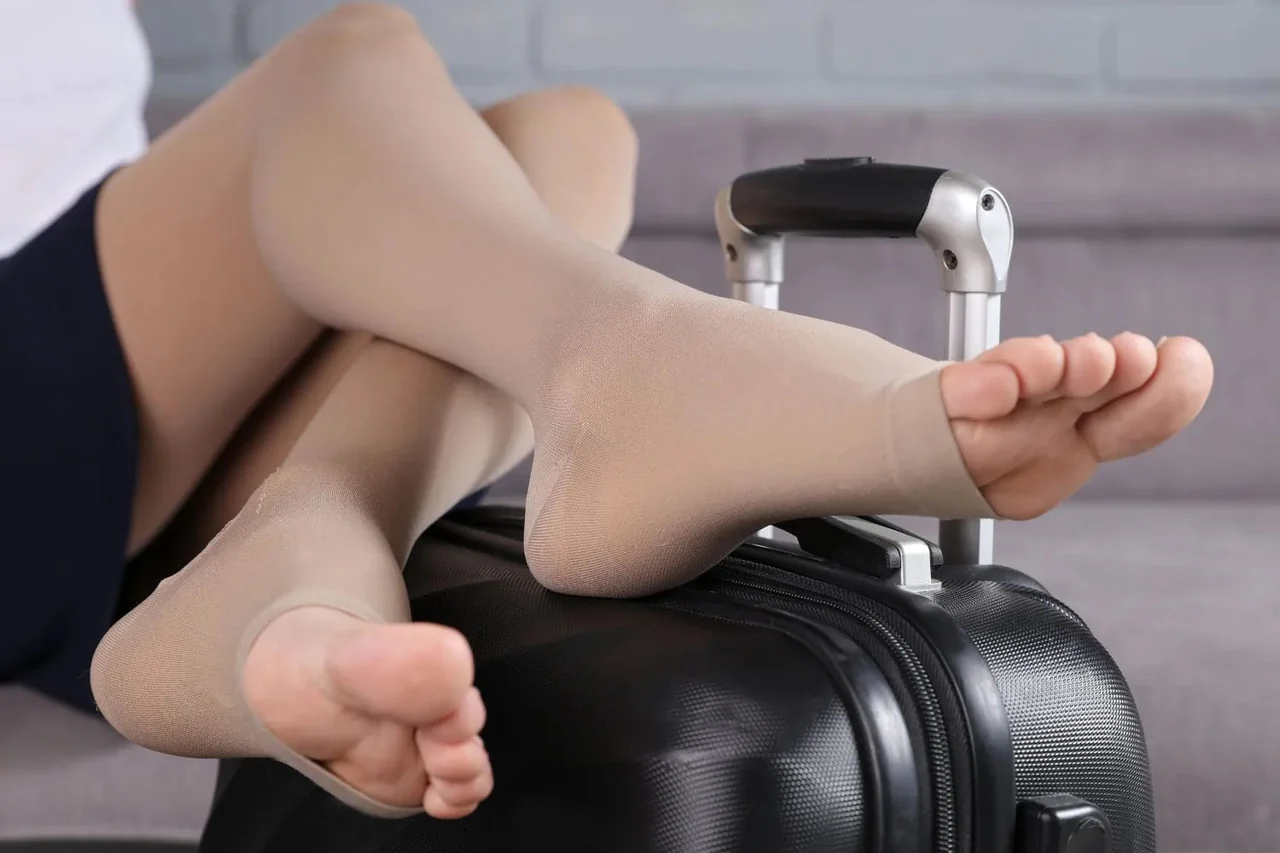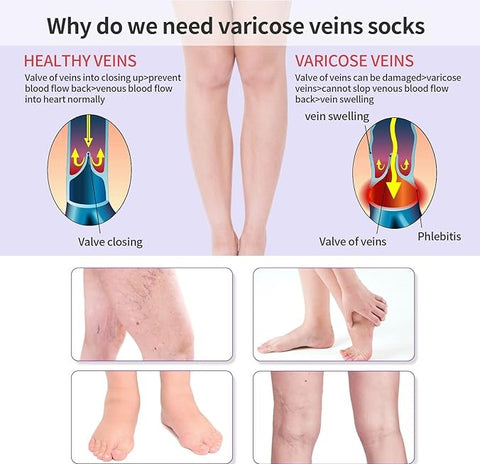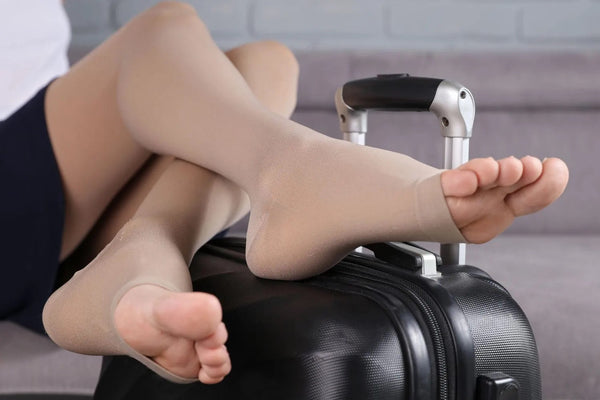
Medically reviewed by Zoe Deol, MD,FACS, DABVLM
Flying, especially long-haul flights, can pose serious risks to your circulatory health. When you stay seated for extended periods of time, your body’s natural blood flow slows down.
This leads to potential issues like:
For example, the risk of blood clots in your legs, known as deep vein thrombosis (DVT), is 1.5 times higher during long-haul flights.
However, wearing compression socks during air travel can help maintain healthy circulation and reduce the chance of DVT.
Continue reading to discover when and how to use compression socks for optimal results and long-term health benefits during air travel.
Wearing compression socks during flights can prevent several health issues caused by reduced circulation. When you are seated for long periods, your blood flow slows, which increases the risk of deep vein thrombosis (DVT) and leg swelling.
Compression socks help because they apply gentle pressure, which:
Therefore, compression socks lower the risk of developing deep vein thrombosis, varicose veins, or other circulation issues while flying.

Compression socks are especially helpful for:

The best time to put on travel compression socks is early in the day or right before your flight when your legs aren't swollen.
Here is why timing matters:
Remember: Putting compression socks on before your flight gives your leg veins the support they need, ensuring steady blood flow and reducing your risk of blood clots during travel.
For long-haul flights, it is important to wear compression socks for the entire duration of your journey. This helps maintain steady blood flow and prevent leg swelling caused by prolonged sitting.
Compression socks are safe to wear for up to 16 hours, so you can safely put them on before your flight.
Pro tip: Ideally you should wear compresssion socks before, the day of, and the day after your flight. If you spend any significant amount of time traveling by car at your destination, you should continue wearing them during long car rides.
These precautions lower the chances of developing complications like deep vein thrombosis or blood clots and improve your overall comfort during travel.
Before choosing the right compression socks for flying, understand the different compression levels measured in mmHg.
These levels indicate the pressure applied to your legs to support blood flow:
Remember: Always consult with a medical professional before choosing compression socks if you have any underlying medical conditions or a history of blood clots.
When putting on compression stockings or socks for your flight, it is important to do it correctly.
The tips below will help you maintain healthy circulation and keep your legs feeling comfortable during the flight, especially if you are dealing with long periods of sitting in cramped conditions:
Wearing flight compression socks can prevent serious issues like leg swelling and blood clots.
These socks support healthy circulation, so they lower your risk of deep vein thrombosis and keep you comfortable on long journeys.
The key is to put them on early—before swelling starts—to ensure the best results.
Remember: Always consult your doctor before using compression socks if you have preexisting circulatory conditions.
Proper timing and use can make a big difference in your circulatory health, so take steps to protect yourself when flying.
Can I put on compression socks after my flight has started?
Yes, you can put them on after your flight starts, but it’s better to wear them before boarding. Putting them on early prevents swelling and gives your legs immediate support during the flight. If swelling has already begun, the socks may not be as effective, or trap fluid in your legs.
What level of compression should I choose for long-haul flights?
For healthy individuals, 15-20 mmHg socks are sufficient for long flights. If you have a history of blood clots or venou issues, 20-30 mmHg is a better choice. Higher compression levels may be needed for more serious medical conditions.
Can compression socks reduce the risk of deep vein thrombosis (DVT) during air travel?
Yes, compression socks help reduce the risk of DVT during air travel by improving blood flow and preventing clots from forming in your legs. They’re especially effective on long flights or long car rides, where sitting for extended periods can slow down circulation.
Are there any risks associated with wearing compression socks for too long?
Wearing compression socks for too long can cause discomfort or restrict blood flow if they’re too tight. It’s important to wear the right size and compression level. If you feel pain, numbness, or tingling, take them off and consult a doctor.
How do I know if my compression socks fit properly?
Compression socks should feel snug but not too tight. They should be smooth and wrinkle-free without bunching up. If they feel too tight, cause pain, or leave deep marks on your skin, your socks may be too small or too compressive.
Can I wear compression socks on shorter flights, or are they only necessary for long-haul travel?
You can wear compression socks on shorter flights, especially if you have venous issues or are prone to leg swelling. They aren’t only for long-haul travel, but shorter flights may not require as high a compression level.
How do I clean and care for my compression socks after use?
Wash your compression socks in cold water using mild detergent. Avoid using bleach or fabric softener. Tumble dry low to maintain their elasticity. Regular washing keeps the material in good shape and ensures the socks remain effective.
What are the signs that I should stop wearing compression socks during a flight?
If you experience pain, numbness, tingling, or other signs of restricted aterial blood flow, remove the socks. If your legs feel unusually tight or uncomfortable, it’s a sign they may not be the right fit or compression level for you.